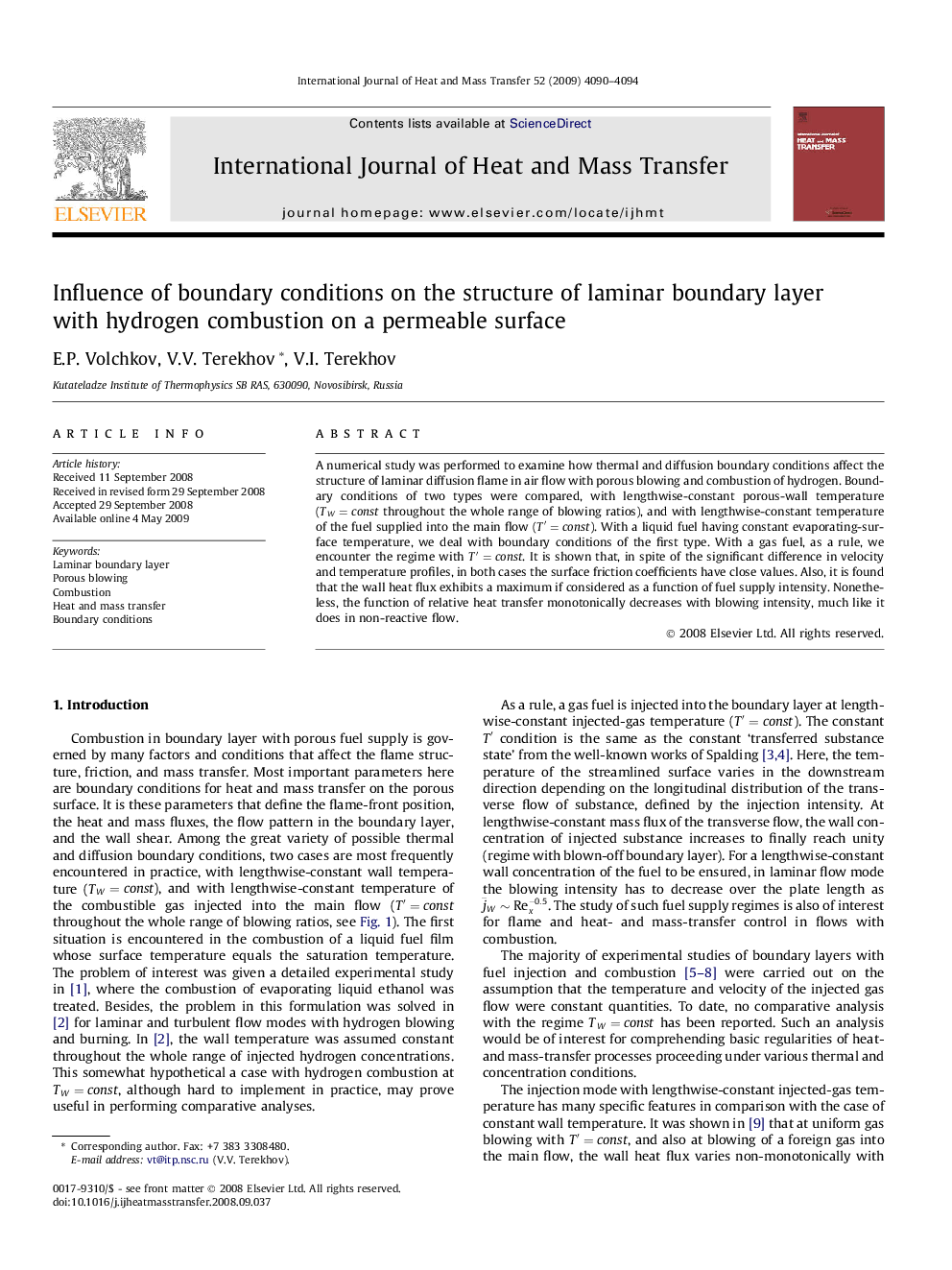| Article ID | Journal | Published Year | Pages | File Type |
|---|---|---|---|---|
| 659348 | International Journal of Heat and Mass Transfer | 2009 | 5 Pages |
A numerical study was performed to examine how thermal and diffusion boundary conditions affect the structure of laminar diffusion flame in air flow with porous blowing and combustion of hydrogen. Boundary conditions of two types were compared, with lengthwise-constant porous-wall temperature (TW=constTW=const throughout the whole range of blowing ratios), and with lengthwise-constant temperature of the fuel supplied into the main flow (T′=constT′=const). With a liquid fuel having constant evaporating-surface temperature, we deal with boundary conditions of the first type. With a gas fuel, as a rule, we encounter the regime with T′=constT′=const. It is shown that, in spite of the significant difference in velocity and temperature profiles, in both cases the surface friction coefficients have close values. Also, it is found that the wall heat flux exhibits a maximum if considered as a function of fuel supply intensity. Nonetheless, the function of relative heat transfer monotonically decreases with blowing intensity, much like it does in non-reactive flow.
